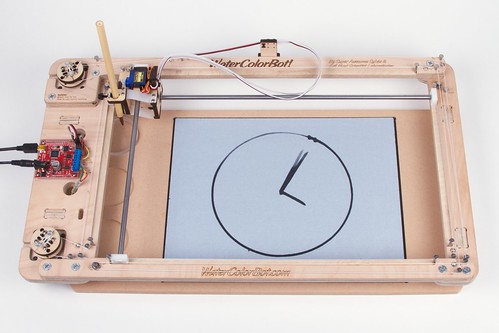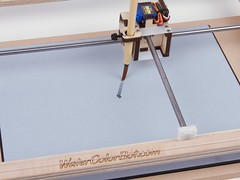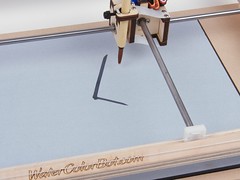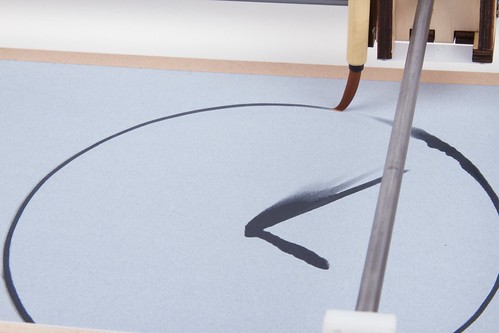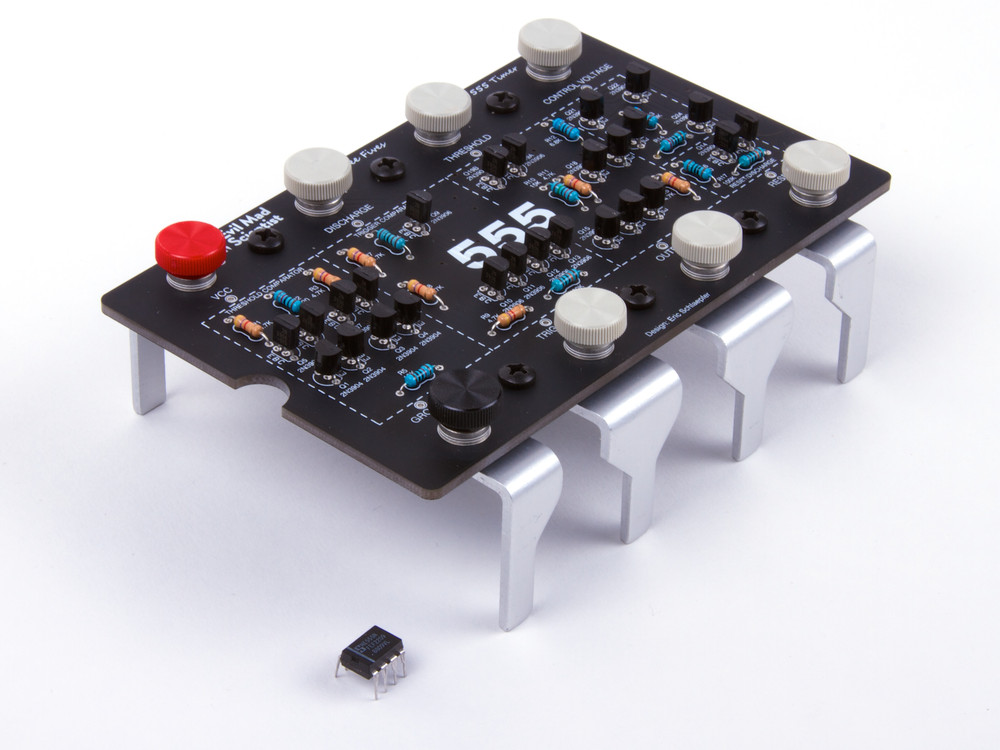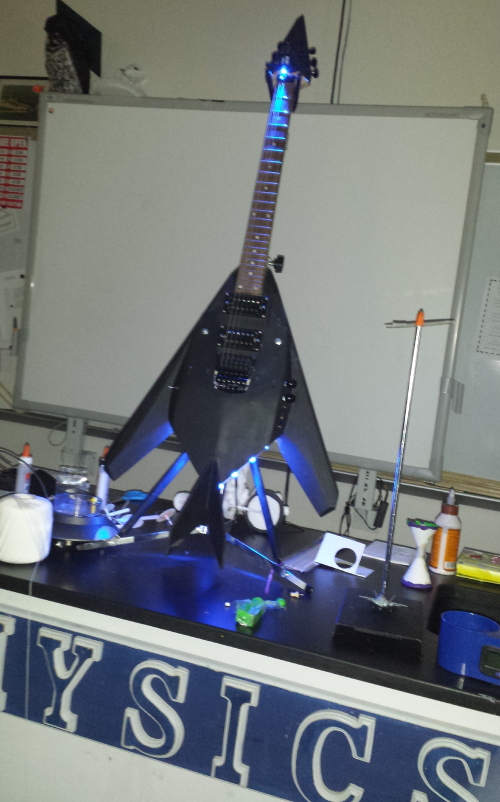
Herb wrote in to say:
When I saw your Octolively LED circuit, the first thing I wanted to do was incorporate it into our electric guitar project.
I teach a basic senior physics class for non-science majors and wanted to try something different; a year-long design project.
We made a guitar from scratch that resembles a stealth fighter. We even wound the humbucker coils in the guitar… Your circuit is used to drive the exhaust lights in response to playing motion…It works well and offers a unique visual effect based on the selected setting…you can even hear the circuit through the amplifier when it drives the blue LEDs…
The Octolively is wired up with the LEDs pointing down from the bottom of the guitar (back of the plane) and the sensors pointing toward the neck to respond the motion of the guitar player.
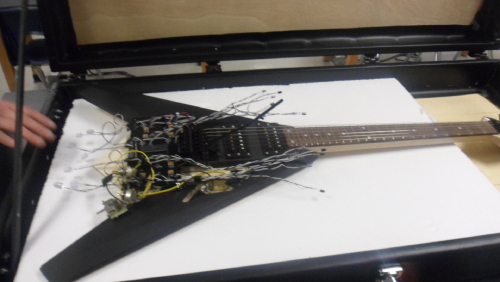
His student, David, added:
Thank you for making such a great educational product to learn about LED’s and simple circuits. Our class worked together to put all of the parts in the correct place and it was a wonderful collaborative learning project.






